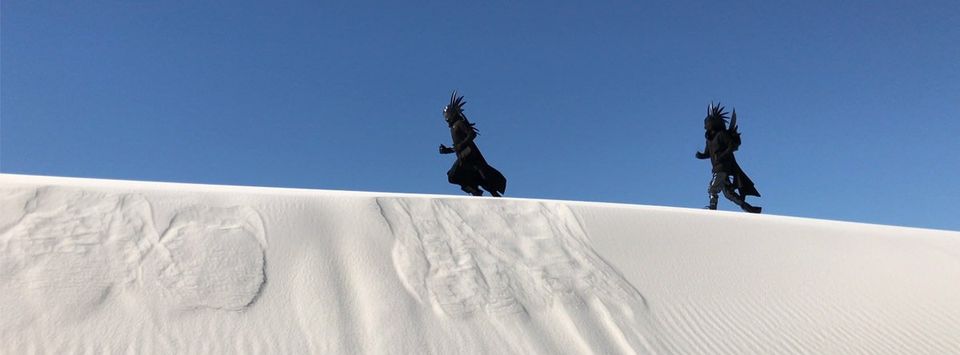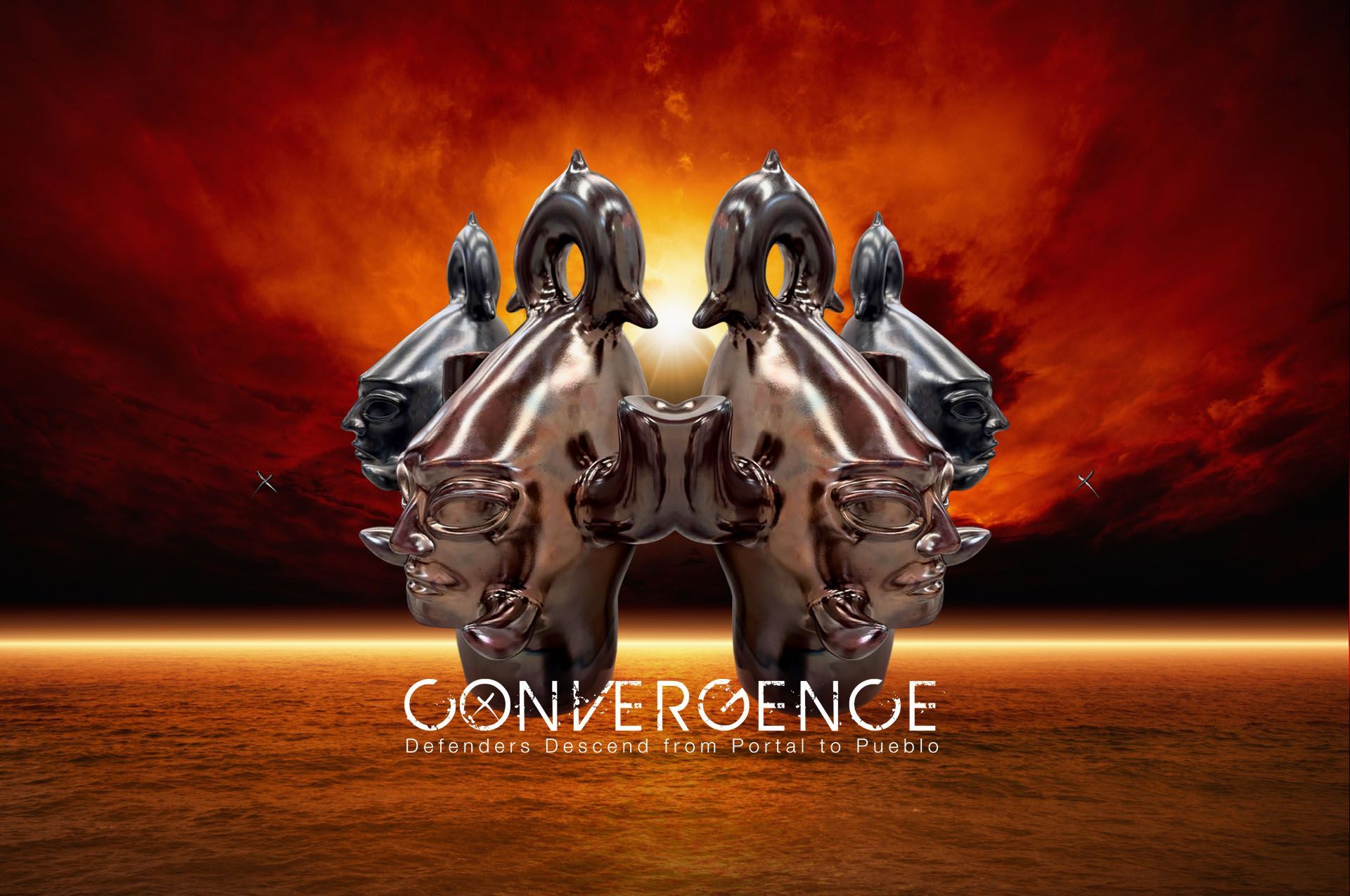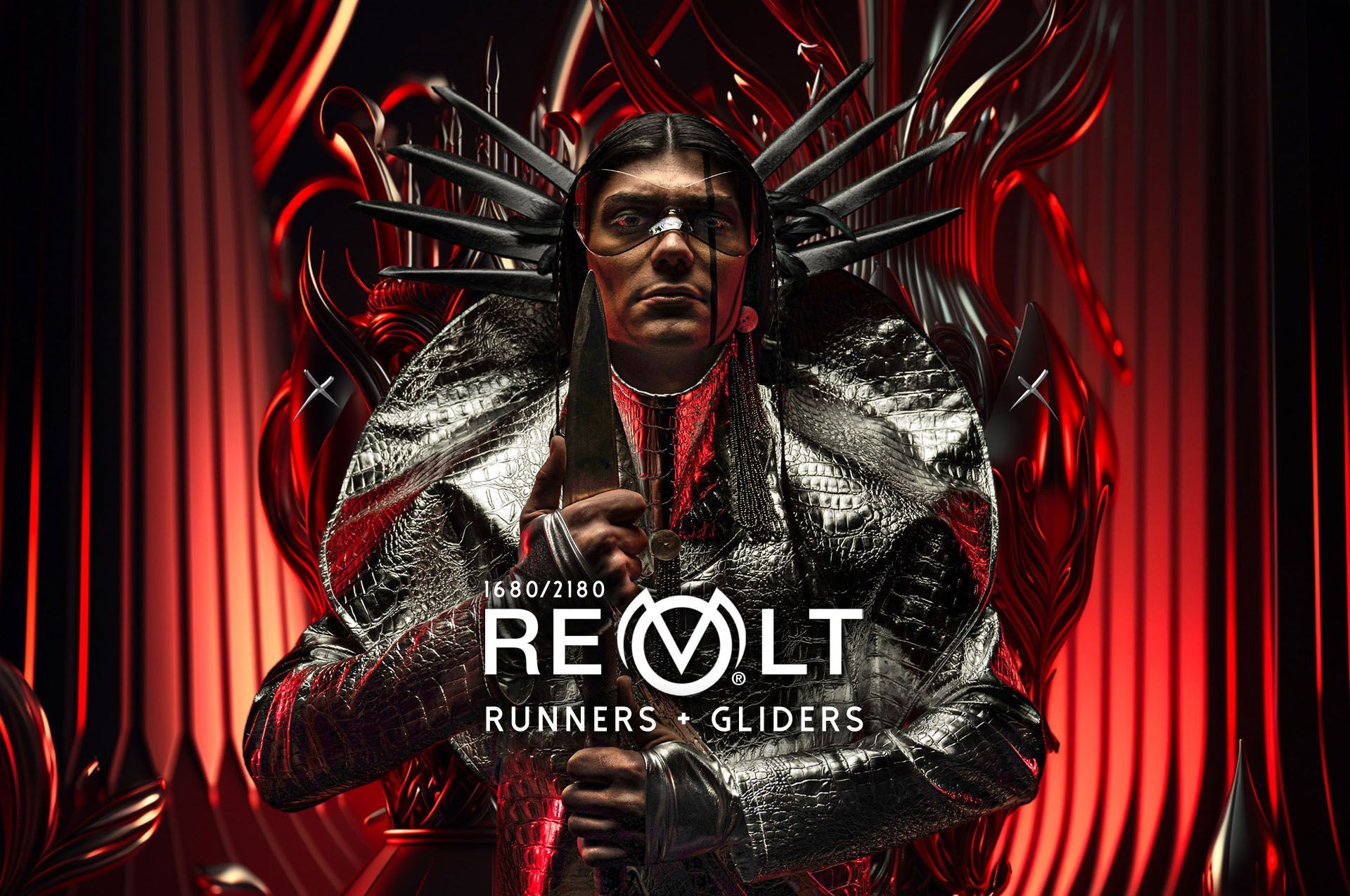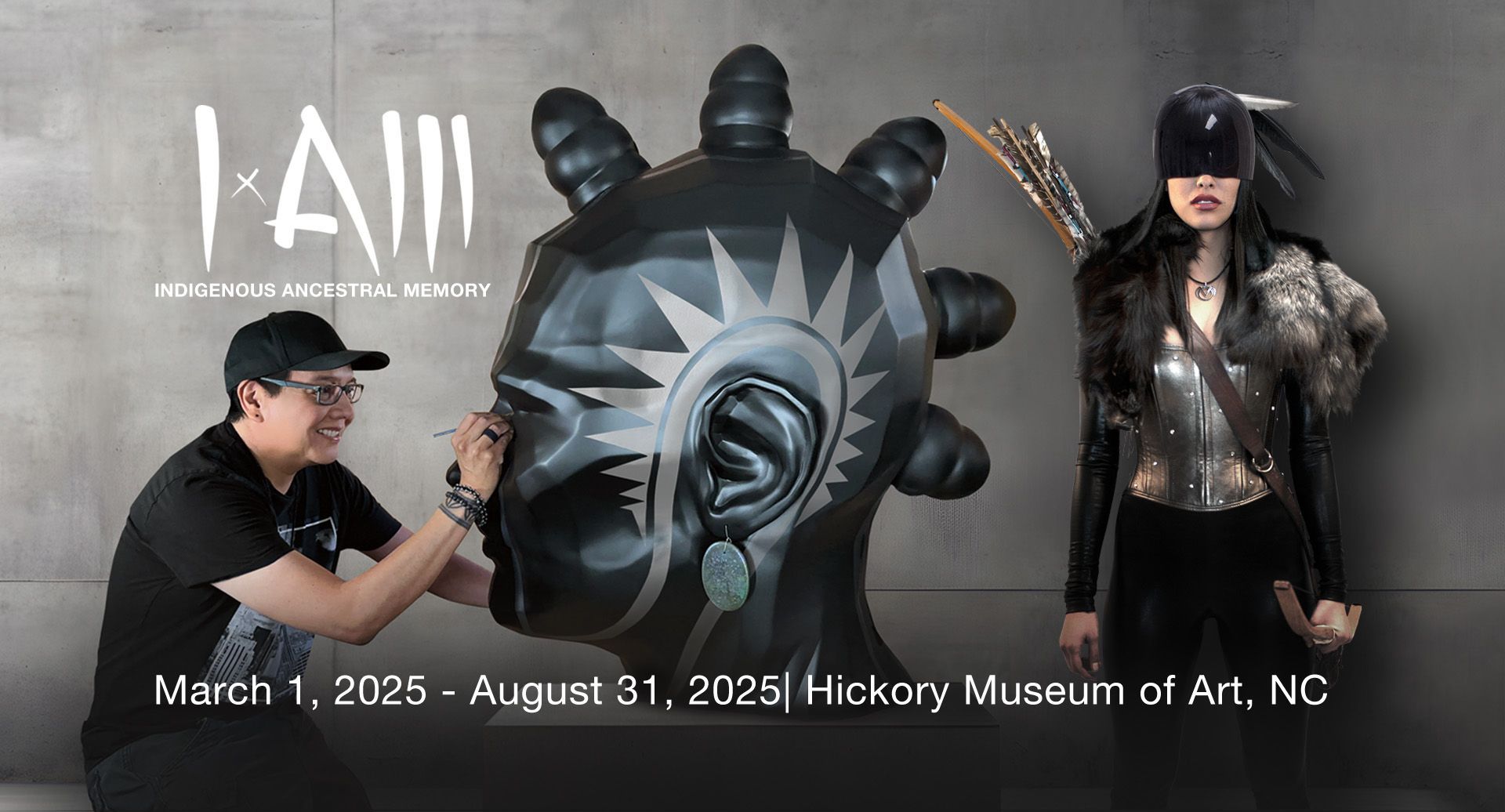
ARTIST STATEMENT
This is a critical moment for the Southwestern Association for Indian Arts (SWAIA) and for Native art. Today, many Native artists feel that they are being discouraged, or that there is an attempt to silence their art, much as happened in the past. Even if it is by accident that some of the older artists didn’t get booths at market this year, there is that feeling that their work doesn’t matter. However, the truth is just the opposite: all these Native artists are coming from a similar background. We all use art to tell our stories.
For me, it is both a personal and cultural experience.
I have been telling the story of the Pueblo Revolt of 1680 for the past two decades. It is not just a story of persecution and revolt, but also a story of resilience — one that seems to be more important than ever to talk about in today’s political and cultural climate. Cochiti Pueblo’s figurative art was destroyed in the 17th century by the conquistadors, who associated it with sorcery and witchcraft. After the revolt and the return of the Spanish, clay once again became a means of personal and cultural expression. By the 1880s, the monos — figures historically created by the women of the pueblo — provided a social commentary on what seemed to be a fast-changing world. Today, the speed of change via social media and the internet makes it increasingly important for Native artists to keep our art relevant and to use art as an educational tool.
The Pueblo Revolt has a strong resonance throughout the Southwest. Since Herman Agoyo began the process of getting the statue of Po’pay into the U.S. Capitol building, Native artists have begun to see how the event speaks to the world today. I have used historic facts to create my own futuristic version of the revolt to help make it relevant and understandable for both kids and those who have never heard of the event. However, there seems to be a slow awakening about its importance: the Denver Art Museum featured Revolt 1680/2180 — a collection of ceramic figures and photographic pieces — in 2015-2016; the Colorado Springs Fine Arts Center will be bringing the story forward with Revolution: Rise against the Invasion, which will open in October 2018. Like the other artists, I am working for Indian Market, but it’s not just about sales: I want to continue to make a statement about my art and culture. I have said for years that I want to give “voice back to the clay,” but I think it’s more important right now to give “voice back to our culture.”
I am working on a group of new pieces about the Pueblo Revolt called Prelude: Revolution Is Coming. The work will be in both my Indian Market booth and at King Galleries in Santa Fe — a holistic approach that includes art, culture, clay, photography, my booth at market and the gallery space. It’s time for all of us involved in Native art to work together to keep it from becoming marginalized as just another ethnic art. It’s time for all of us — collectors, galleries, artists and market attendees — to stand together and protect, promote and enjoy this awe-inspiring American Indigenous art in all its forms. Just as the Pueblo Revolt was the First American Revolution, Native art is the First American Art.
Virgil Ortiz (Cochiti Pueblo) — the son and grandson of renowned potters Seferina Ortiz and Laurencita Herrera — won his first Santa Fe Indian Market award at age 14. He is a sculptor, photographer, graphic artist, fashion designer and home decor designer. His work has been exhibited and collected both nationally and internationally. To learn more about Ortiz and his work, visit virgilortiz.com.
About The Cover
The image of Aeronauts searching desert battlefields is from Revolt 1680/2180, Virgil Ortiz’s ongoing film project.
The accompanying narrative and video trailer:
Revolution is Coming It is 2180. The pueblos are in chaos. The invasion of Native land continues. The scourge of war rages everywhere. The time to act is now. Cuda and Steu, the Aeronaut twins, are the captain and head commander of the Survivorship Armada. They summon their fleet and prepare for extreme warfare against the invading Castilian forces. Translator and the Spirit World Army are transported to earth’s realm to aid Po’pay, Tahu and her army of Blind Archers in preparation for an unprecedented revolt. Desperately, the Aeronauts search for any remaining clay artifacts from the battlefields. They know that challenges and persecution will continue, so it is imperative to preserve and protect their clay, culture, language and traditions from extinction.
A larger-scale video, introducing more characters from his “Revolt” storyline, will be unveiled at Ortiz’s “Revolution: Rise against the Invasion” exhibit at the Colorado Springs Fine Arts Center on October 6, 2018.







